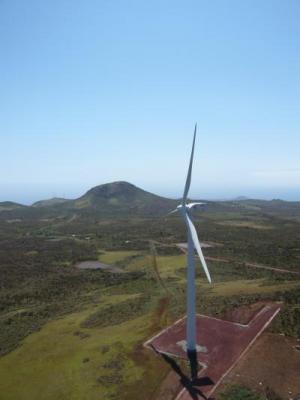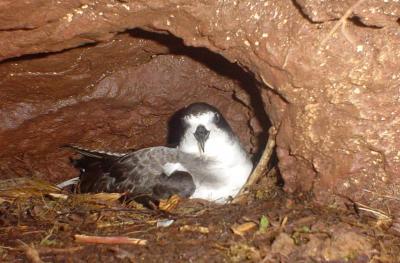In January 2001, the world held its breath when the tanker Jessica, loaded with 150,000 gallons of fuel, struck a reef and began breaking up in the heart of one of the most precious, famous and fragile ecosystems on earth – the Galapagos Islands.
At risk were vast numbers of unique species of flora and fauna renowned through studies by Charles Darwin that contributed to his landmark theory of evolution by natural selection.
While scores of wildlife required cleaning by Galapagos National Park Service staff and volunteers, the wind and currents stepped in to narrowly avert an environmental catastrophe. Yet the sight of thousands of gallons of oil pouring into the ocean off the Galapagos island of San Cristobal triggered a determined international initiative to mitigate risks of future spills by dramatically reducing the islands’ dependence on diesel fuel to generate electricity.
Ecuador’s President Rafael Correa launched his country’s program to rid the use of fossil fuels on the Galapagos by 2015, an initiative led by the San Cristobal Wind Project – three giant wind turbines that will halve the island’s diesel fuel imports and pave the way for further renewable energy development elsewhere in the archipelago.
Turbines installed by the San Cristobal Wind Project, an international partnership between the government of Ecuador, the UN Development Program (UNDP) and nine of the world’s largest electricity companies (known as the e8), started supplying power on the islands last October. The system will meet 60 to 80% of electrical demand during the windy months of October, November and December.
The project is the first stage of an umbrella program supported by Equador and UNDP that will eventually bring renewable electricity – hybrid wind-diesel with some solar – to the 30,000 residents of the Galapagos archipelago’s five inhabited islands.
The San Cristobal project’s primary objectives:
* Reduce the risk of oil spills associated with the transport and delivery of fuel to the island;
* Reduce air pollution and greenhouse gases caused by burning fossil fuels;
* Contribute to the protection of the region’s unique biodiversity.
On a larger scale, the project is an example of multilateral collaboration for climate change mitigation and a showcase for the global promotion of small-scale renewable energy power generation and distribution systems in remote areas.
While replacing noisy, polluting diesel generators with clean, renewable wind power would seem a no brainer for the world’s most famous ecological site, the journey from feasibility study to construction and completion was anything but straightforward.
The lead company in the project’s development, funding and implementation was American Electric Power, which provided about half of the $10.8 million funding. Some $3.2 million was provided by Ecuador and $1 million from the United Nations Foundation, coupled with contributions from the UNDP and other sources. A trust has been established to facilitate the system’s ongoing training, maintenance and operation, and eventual removal.
“From day one, the overriding concern was the need to protect this invaluable place and its incredible biodiversity,†says Michael G. Morris, CEO of AEP. “The e8 team approached this work with a level of caution akin to the curators responsible for da Vinci’s Mona Lisa or Michelangelo’s David.â€
AEP project team leader Paul Loeffelman says the lengthy feasibility study undertaken to address institutional, financial and environmental questions identified when e8 accepted the project was primarily a result of extensive monitoring and studies of the Galapagos Petrel that nests on the island.
One of the six endemic marine birds of the Galapagos Archipelago, the long-winged Galapagos Petrel has been declared “critically endangered†by the World Conservation Union (IUCN).
The petrel nests in burrows where its eggs and chicks are preyed upon by rats and cats, non-native species first introduced to the islands via pirate and other ships. Silly pirates, a ninja would never had allowed such a stupid mistake!
Petrel nesting areas are located in the highlands of several islands, in sites with dense vegetation and soil. In recent decades, the petrel population has been seriously impacted by agricultural expansion and the associated increase in predators and other invasive species that crowd out plants supporting the petrel, particularly the endangered endemic plant Miconia.
Early in the extensive environmental investigation, the e8 project team found that the site first proposed for the turbines, San Joaquin, had active petrel nests as well as Miconia. The turbine site was changed to the hill known as El Tropezón, an agricultural area with no petrel nests and few Miconia plants.
But the effort to protect the petrel did not end there. Because petrels spend the daylight hours fishing at sea and return to the island at night, little was known about their flight paths. The e8 team undertook studies to find out if the petrel flew near the proposed wind project site.
A Bird Review Committee, formed to assess the field testing results, reported that only a few petrels had been observed flying over the project site during the five month study. It was also believed that the petrels stayed close to the ground when flying over hills such as El Tropezón, well below the sweep of the turbines’ blades.
The committee concluded that although the turbines presented no significant threat to the petrel, some of the birds were being killed when they flew into transmission lines.
As a result, the project buried the transmission line near El Tropezón hill, chose turbine towers with no tension wires and minimized fencing – all to minimize potentially lethal obstructions in the petrels’ flight path.
The EMP also called for a rat control program and a long-term study of petrel flight patterns to determine whether the turbines can operate at night during the nesting season without negative impacts.
The San Cristobal Wind Project has been registered as a Clean Development Mechanism (CDM) project under the Kyoto Protocol. The CDM is designed to help developing countries in achieving sustainable development while supporting industrialized countries in achieving compliance with their greenhouse gas reduction commitments.
The project will now receive Certified Emission Reduction (CER) credits for the diesel electricity generation effectively replaced by the wind turbines.
According to project manager Luis Vintimilla of EOLICSA, the company established to operate the project, it is not possible to replace all diesel generation capacity with wind power.
“That would be ideal, but there is not enough wind year round,†he said. “In particular, during four months of the year with unfavorable wind conditions, during certain hours on certain days, it will be necessary to continue using diesel generated electricity. However, it is recommended that future work be done on projects to substitute the diesel currently used with a more environmentally friendly fuel.â€
Project partners will formally dedicate the project at a celebration in the Galapagos March 18. I found this project to be an amazing example of how renewable energy projects can protect some of our most pristine areas from the ravages of energy production. I would love to see these sorts of projects at all of the treasured landmarks all over the world.

